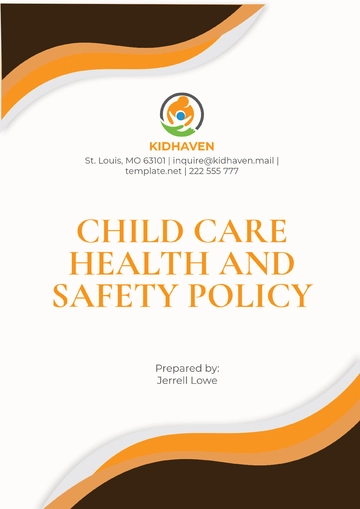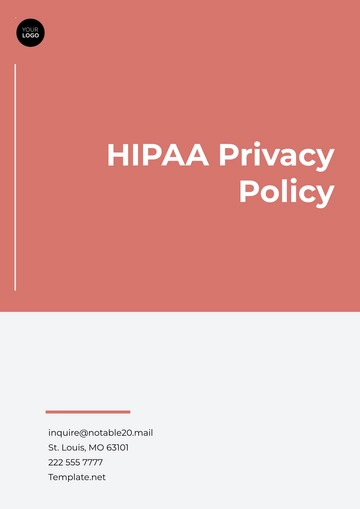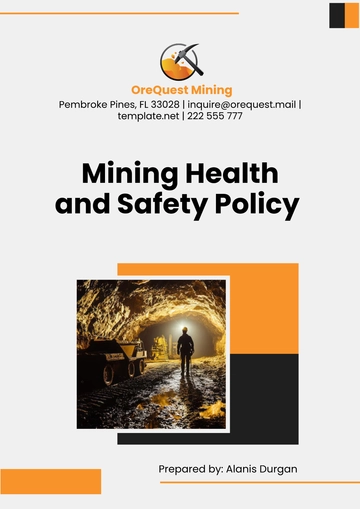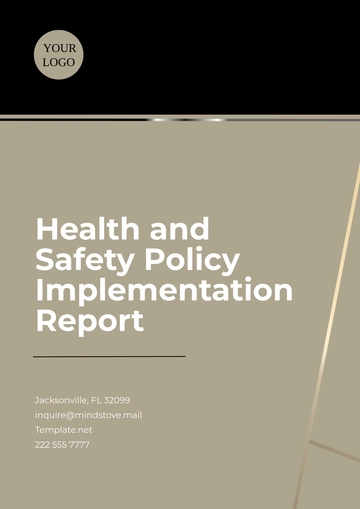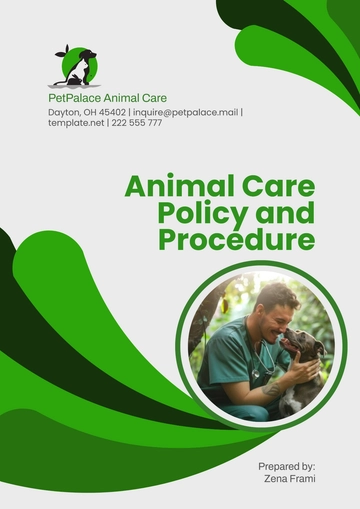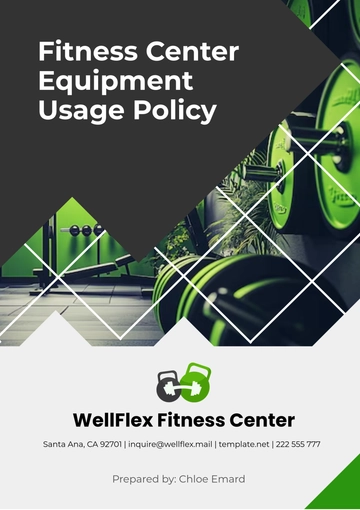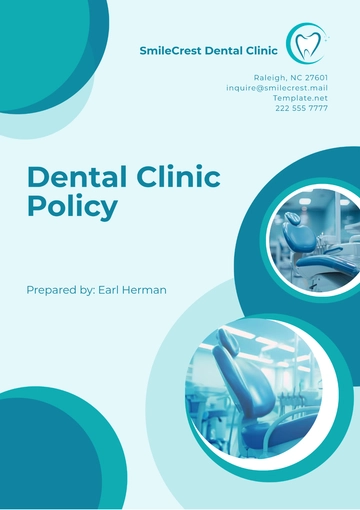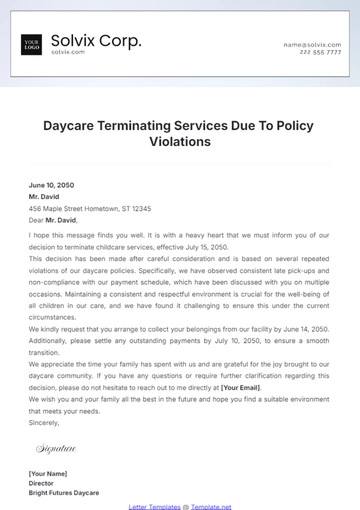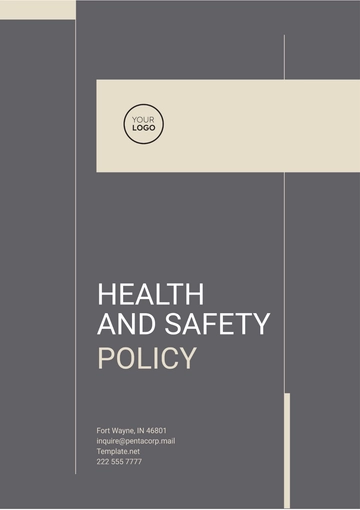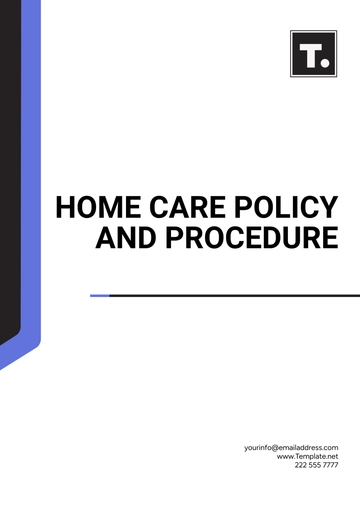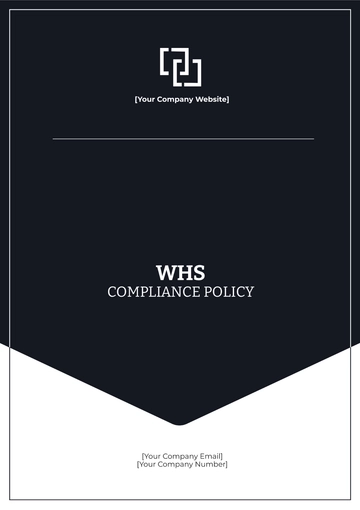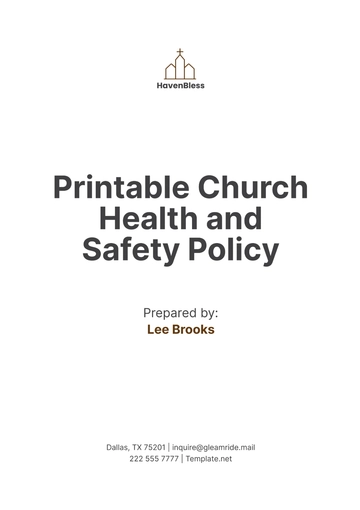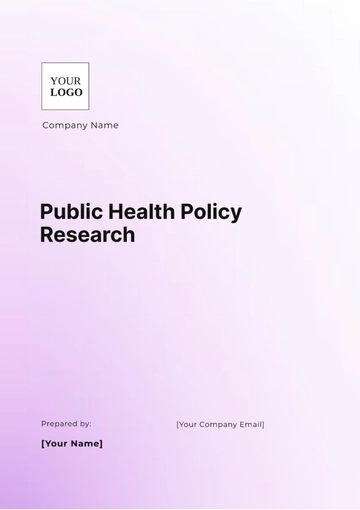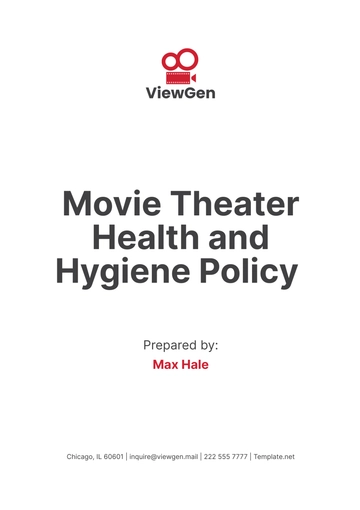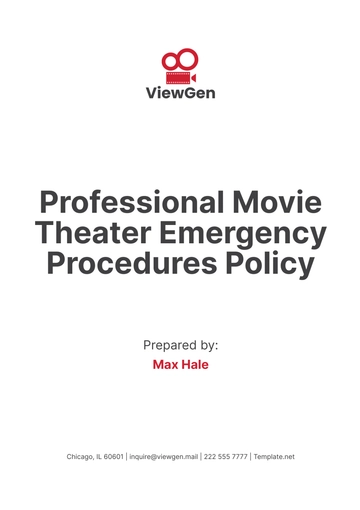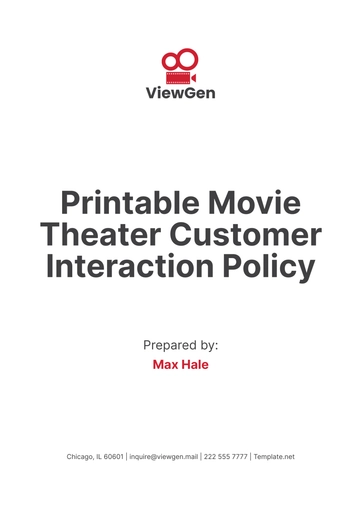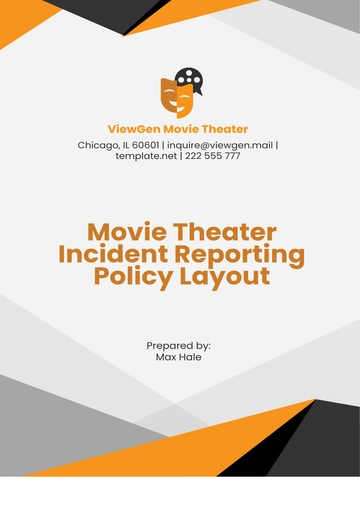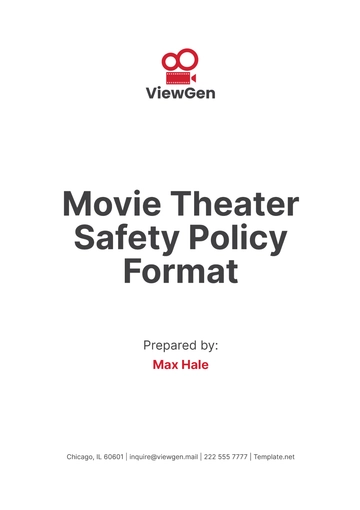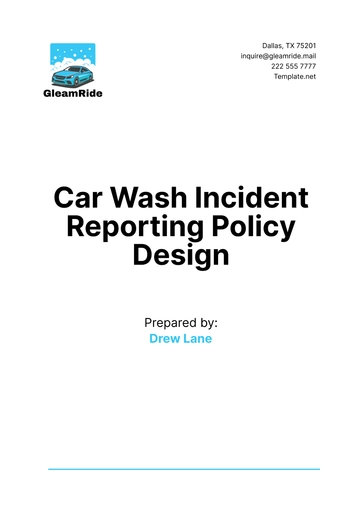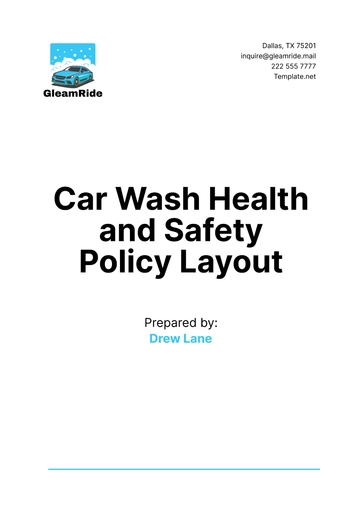Free Movie Theater Safety Policy Format
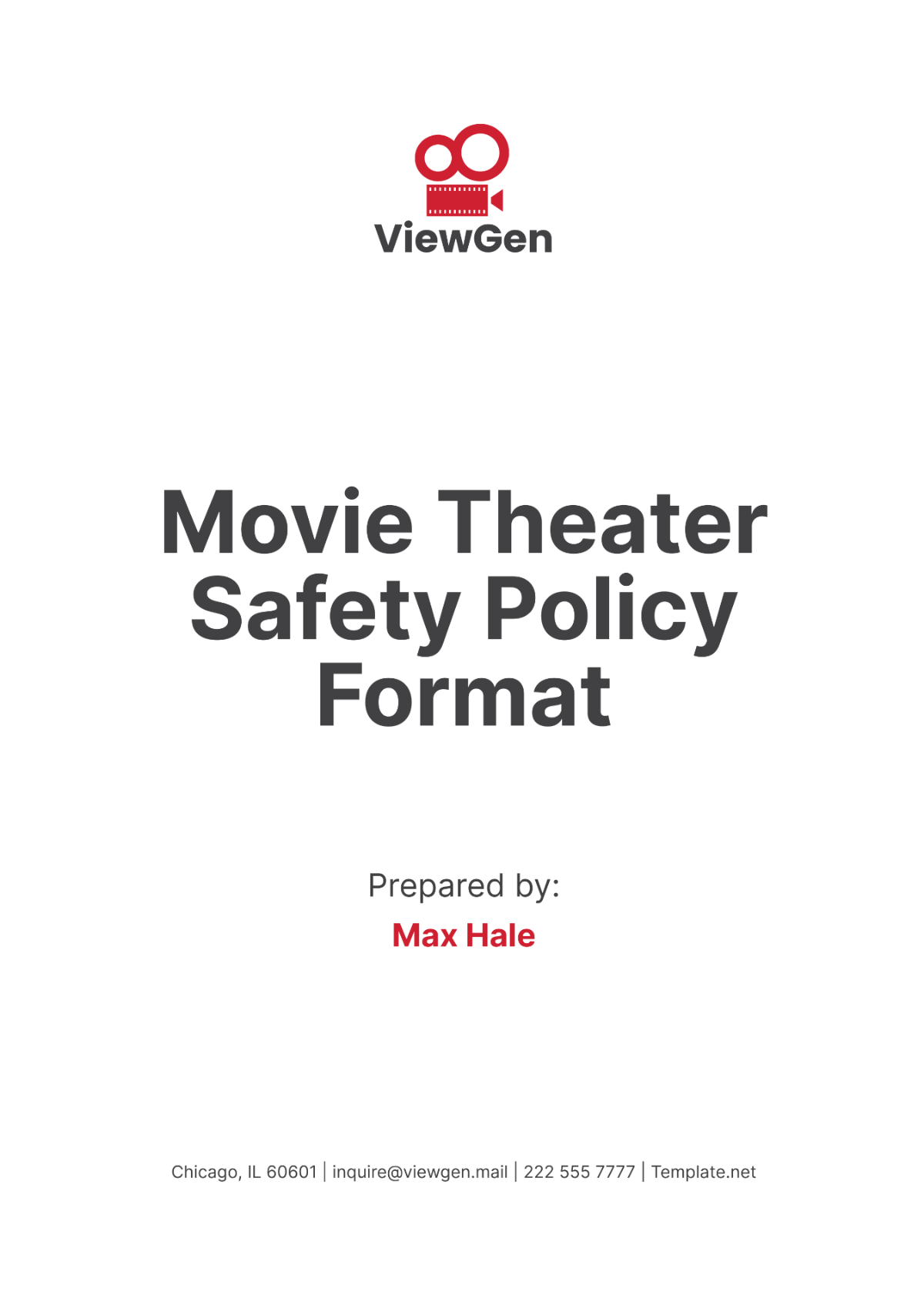
I. Introduction
At [Your Company Name], the safety of our employees and patrons is our top priority. This Movie Theater Safety Policy outlines our commitment to maintaining a secure and hazard-free environment. We aim to provide clear guidelines and procedures to ensure the well-being of everyone within our facilities.
A. Purpose
Employee Safety: Protecting our employees from potential hazards is essential to our operations. This policy establishes safety protocols to mitigate risks and ensure a safe working environment.
Patron Safety: Ensuring the safety of our patrons is critical. We are committed to implementing measures that safeguard our guests from accidents and emergencies.
Compliance: Adhering to safety regulations and industry standards is mandatory. This policy ensures that we meet all legal and regulatory requirements.
B. Scope
Facilities: This policy applies to all areas within [Your Company Name], including auditoriums, lobbies, restrooms, and concession areas. Each space is subject to specific safety protocols tailored to its unique risks.
Employees: All employees, including full-time, part-time, and temporary staff, must adhere to this policy. Comprehensive training will be provided to ensure compliance.
Patrons: While the primary focus is on employee safety, patrons must also follow certain guidelines to maintain a safe environment. Clear signage and instructions will be provided.
C. Objectives
Risk Reduction: The main objective of this policy is to minimize risks associated with our operations. Identifying potential hazards and implementing preventive measures is crucial.
Emergency Preparedness: Being prepared for emergencies is vital. This policy outlines procedures for handling various emergency situations to ensure a prompt and effective response.
Continuous Improvement: Safety is an ongoing process. Regular reviews and updates to this policy will ensure that we continuously improve our safety standards.
II. Safety Responsibilities
A. Management Responsibilities
Policy Implementation: Management is responsible for implementing this safety policy. Ensuring that all safety measures are in place and adhered to is a key management duty.
Resource Allocation: Providing the necessary resources, including safety equipment and training, is essential. Management must allocate appropriate funds and materials to support safety initiatives.
Monitoring and Review: Regular monitoring and review of safety practices are required. Management must conduct periodic inspections and audits to ensure compliance.
B. Employee Responsibilities
Adherence to Procedures: Employees must follow all safety procedures and protocols. This includes using personal protective equipment (PPE) and adhering to safety guidelines.
Reporting Hazards: Identifying and reporting potential hazards is crucial. Employees must promptly report any unsafe conditions or incidents to their supervisors.
Participation in Training: Participating in safety training programs is mandatory. Employees must attend all scheduled training sessions to stay informed about safety practices.
C. Patron Responsibilities
Following Guidelines: Patrons must follow all safety guidelines provided by the theater. This includes observing posted signs and instructions from staff.
Reporting Incidents: Patrons should report any accidents or unsafe conditions to theater staff immediately. Prompt reporting helps address issues quickly and prevents further incidents.
Respecting Theater Rules: Adhering to theater rules, such as no smoking and no running, is essential for maintaining a safe environment. Patrons must respect these rules at all times.
III. Risk Assessment
The following table provides an overview of identified risks and their respective mitigation measures:
Risk | Mitigation Measure | Responsible Party |
|---|---|---|
Slips and Falls | Install non-slip flooring, use caution signs | Facilities Manager |
Fire Hazards | Regular fire drills, maintain fire equipment | Safety Coordinator |
Electrical Hazards | Routine inspections, use of certified electricians | Maintenance Team |
Health Emergencies | First aid training, availability of AEDs | Human Resources |
Security Threats | Security personnel, CCTV surveillance | Security Manager |
A. Slips and Falls
Non-Slip Flooring: Installing non-slip flooring in high-traffic areas reduces the risk of slips. This measure is particularly important in restrooms and concession areas.
Caution Signs: Using caution signs in wet or recently cleaned areas alerts patrons and employees to potential hazards. Regularly updating and placing these signs is crucial.
Routine Maintenance: Regular maintenance checks ensure that flooring and walking surfaces are in good condition. Promptly addressing any issues prevents accidents.
Training: Training staff on proper cleaning techniques and hazard identification is essential. Employees should know how to spot potential slip hazards and take corrective action.
Incident Reporting: Encouraging employees and patrons to report incidents or near-misses helps identify areas needing improvement. Collecting and analyzing this data can lead to better preventive measures.
B. Fire Hazards
Fire Drills: Conducting regular fire drills prepares employees and patrons for emergencies. These drills should be scheduled quarterly and involve all staff members.
Fire Equipment: Maintaining and inspecting fire extinguishers, alarms, and sprinkler systems ensures they function correctly during emergencies. Routine checks are mandatory.
Emergency Exits: Ensuring that emergency exits are clearly marked and unobstructed is vital. Regular inspections and maintenance of exit routes are necessary.
Training: Employees must be trained on fire safety procedures, including the use of fire extinguishers and evacuation protocols. Regular refresher courses should be conducted.
C. Electrical Hazards
Routine Inspections: Conducting regular inspections of electrical systems helps identify potential hazards. A certified electrician should perform these inspections.
Certified Electricians: Only certified electricians should handle electrical repairs and installations. This ensures that all work meets safety standards.
Safe Use of Equipment: Employees must be trained in the safe use of electrical equipment. Proper handling and storage practices are essential to prevent accidents.
Preventive Maintenance: Implementing a preventive maintenance schedule for electrical systems can prevent issues before they become hazardous.
D. Health Emergencies
First Aid Training: Providing first aid training to employees equips them to handle health emergencies. Regular refresher courses ensure skills remain current.
Availability of AEDs: Automated External Defibrillators (AEDs) should be available and accessible in key areas. Employees must be trained in their use.
Emergency Contacts: Keeping a list of emergency contacts and nearby medical facilities is crucial. This information should be readily available to staff.
Health Protocols: Implementing health protocols, such as sanitization and hygiene practices, helps prevent the spread of illnesses.
E. Security Threats
Security Personnel: Employing trained security personnel helps deter and respond to security threats. Regular training and drills should be conducted to keep skills sharp.
CCTV Surveillance: Installing CCTV cameras throughout the theater provides continuous monitoring and helps identify suspicious activity. Regularly reviewing footage is important.
Access Control: Implementing access control measures, such as restricted areas and employee badges, enhances security. Regular audits ensure compliance.
Incident Response Plan: Developing an incident response plan for security threats ensures a coordinated and effective response. Employees should be familiar with the plan and their roles.
Communication Systems: Ensuring that communication systems are in place for reporting and responding to security incidents is crucial. Regular testing and maintenance are necessary.
Addressing these risks through proactive measures is essential for maintaining a safe environment. Regular training, maintenance, and inspections are key components of our risk management strategy. By implementing these measures, we can effectively mitigate potential hazards and ensure the safety of our employees and patrons.
IV. Emergency Procedures
The following table provides an overview of the steps involved in our emergency procedures:
No. | Step | Description |
|---|---|---|
1 | Alert Authorities | Notify emergency services immediately |
2 | Evacuate Building | Guide patrons and staff to emergency exits |
3 | Provide First Aid | Administer first aid to injured persons |
4 | Secure Premises | Ensure the area is safe and secure |
5 | Communicate Status | Update management and emergency services |
6 | Review Procedures | Assess and improve emergency protocols |
A. Alert Authorities
Immediate Notification: In the event of an emergency, the first step is to notify emergency services immediately. This ensures a rapid response from professionals.
Accurate Information: Provide accurate and detailed information about the emergency. This includes the nature of the incident, location, and any known hazards.
Designated Contact: Assign a designated contact person to communicate with emergency services. This person should be trained and familiar with emergency protocols.
B. Evacuate Building
Guiding Patrons: Staff must guide patrons to the nearest emergency exits. Clear communication and calm behavior are essential to prevent panic.
Emergency Exits: Ensure that all emergency exits are unobstructed and clearly marked. Regular drills help familiarize staff and patrons with exit routes.
Assisting Disabled Individuals: Special attention should be given to assisting disabled individuals during evacuation. Staff must be trained in appropriate evacuation techniques.
C. Provide First Aid
Administering Aid: Administer first aid to injured persons until professional help arrives. Staff should be trained in basic first aid and CPR.
First Aid Kits: Ensure that first aid kits are readily available and stocked with necessary supplies. Regular checks and restocking are essential.
Documentation: Document the details of the injury and the first aid provided. This information is important for medical professionals and incident reports.
D. Secure Premises
Assessing Safety: Assess the area to ensure it is safe and secure. Remove any immediate hazards and prevent access to dangerous areas.
Crowd Control: Implement crowd control measures to ensure safety and order. Use barriers, signage, and staff to manage the crowd.
Communication: Communicate with staff and patrons about the status of the emergency and any necessary actions. Clear and concise information is vital.
E. Communicate Status
Management Updates: Provide regular updates to management about the status of the emergency and any actions taken. This ensures that management is informed and can make decisions.
Patron Updates: Keep patrons informed about the status of the emergency and any necessary actions. Clear and calm communication helps prevent panic.
Emergency Services Updates: Maintain communication with emergency services to provide updates and receive instructions. This ensures a coordinated response.
F. Review Procedures
Post-Incident Review: Conduct a review of the emergency procedures after an incident. Identify any areas for improvement and update protocols as needed.
Employee Feedback: Collect feedback from employees about the emergency response. This helps identify any issues and improve procedures.
Training Updates: Update training programs based on the review findings. Ensure that employees are trained on any new procedures.
Documentation: Document the review process and any changes made to procedures. This provides a record of continuous improvement.
Having well-defined emergency procedures is crucial for ensuring safety during emergencies. Regular drills, training, and maintenance of emergency equipment are essential components of our preparedness strategy. By following these procedures, we can effectively manage emergencies and minimize risks to our employees and patrons.
V. Safety Training
A. Training Programs
Initial Training: Provide initial safety training to all new employees. This training covers basic safety protocols, emergency procedures, and hazard identification.
Refresher Courses: Conduct regular refresher courses to reinforce safety knowledge. These courses ensure that employees remain up-to-date with current practices.
Specialized Training: Offer specialized training for specific roles and responsibilities. This includes training for first aid, fire safety, and equipment handling.
Interactive Training: Utilize interactive training methods, such as simulations and role-playing, to enhance learning and retention.
B. Training Schedule
Orientation Training: Orientation training is conducted during the onboarding process. This ensures that new employees are familiar with safety protocols from day one.
Quarterly Training: Schedule quarterly training sessions for all employees. These sessions review existing protocols and introduce any updates.
Annual Training: Conduct comprehensive annual training to cover all aspects of safety. This includes reviewing emergency procedures and conducting drills.
On-Demand Training: Provide on-demand training resources, such as online courses and manuals, for employees to access as needed.
C. Training Evaluation
Knowledge Assessments: Conduct assessments to evaluate employees' understanding of safety protocols. This helps identify areas where additional training is needed.
Feedback Mechanisms: Implement feedback mechanisms to gather employees' input on training effectiveness. Use this feedback to improve training programs.
Performance Reviews: Include safety performance in employee performance reviews. This reinforces the importance of adhering to safety protocols.
Continuous Improvement: Regularly review and update training programs based on evaluations and feedback. Ensure that training remains relevant and effective.
D. Training Resources
Training Materials: Provide comprehensive training materials, such as manuals, videos, and presentations. Ensure that these materials are up-to-date and accessible.
Experienced Trainers: Utilize experienced trainers to conduct training sessions. Trainers should be knowledgeable and skilled in safety practices.
Training Facilities: Ensure that training facilities are equipped with necessary resources, such as first aid kits and fire safety equipment. Conduct training in a safe and controlled environment.
E. Employee Participation
Mandatory Attendance: Require mandatory attendance for all scheduled training sessions. This ensures that all employees receive the necessary training.
Active Engagement: Encourage active engagement and participation in training sessions. Interactive methods, such as discussions and simulations, enhance learning.
Training Records: Maintain records of all training sessions and employee participation. This documentation is important for compliance and tracking progress.
Effective safety training is a cornerstone of our safety policy. Providing comprehensive and regular training ensures that employees are well-prepared to handle safety protocols and emergencies. By continuously evaluating and improving our training programs, we can maintain a high standard of safety awareness and preparedness among our staff.
VI. Maintenance of Safety Equipment
The following table provides an overview of the maintenance schedule for safety equipment:
No. | Equipment | Maintenance Schedule |
|---|---|---|
1 | Fire Extinguishers | Monthly checks, annual servicing |
2 | AEDs | Quarterly checks, battery replacement |
3 | CCTV Systems | Monthly checks, annual servicing |
4 | First Aid Kits | Monthly checks, restocking as needed |
5 | Emergency Lighting | Monthly checks, bulb replacement |
A. Fire Extinguishers
Monthly Checks: Conduct monthly checks of all fire extinguishers to ensure they are in working order. Look for signs of damage or tampering.
Annual Servicing: Arrange for annual servicing by a certified professional. This includes inspection, maintenance, and replacement of extinguishers as needed.
Proper Placement: Ensure that fire extinguishers are properly placed in easily accessible locations. Clear signage should indicate their location.
B. AEDs
Quarterly Checks: Conduct quarterly checks of AEDs to ensure they are functional. Check for battery life and any signs of damage.
Battery Replacement: Replace AED batteries as per the manufacturer's recommendations or when low battery indicators are displayed.
Employee Training: Ensure that employees are trained in the use of AEDs. Regular refresher courses should be conducted.
C. CCTV Systems
Monthly Checks: Conduct monthly checks of CCTV systems to ensure they are operational. Check cameras, recording equipment, and storage devices.
Annual Servicing: Arrange for annual servicing by a certified professional. This includes inspection, maintenance, and replacement of faulty equipment.
Footage Review: Regularly review CCTV footage to ensure the system is capturing clear and useful images. Address any issues promptly.
D. First Aid Kits
Monthly Checks: Conduct monthly checks of first aid kits to ensure they are fully stocked and items are within their expiration dates.
Restocking: Restock first aid kits as needed. Replace used or expired items promptly to ensure kits are always ready for use.
Accessibility: Ensure that first aid kits are easily accessible in key areas of the theater. Clear signage should indicate their location.
E. Emergency Lighting
Monthly Checks: Conduct monthly checks of emergency lighting to ensure it is operational. Replace any faulty bulbs or fixtures.
Bulb Replacement: Replace bulbs in emergency lighting systems as needed. Use high-quality, long-lasting bulbs to minimize maintenance.
Regular Testing: Conduct regular testing of emergency lighting systems to ensure they function correctly during power outages.
Maintaining safety equipment is crucial for ensuring the effectiveness of our safety protocols. Regular checks and servicing of equipment such as fire extinguishers, AEDs, CCTV systems, first aid kits, and emergency lighting help prevent failures during emergencies. By keeping this equipment in optimal condition, we can respond effectively to incidents and maintain a safe environment for employees and patrons.
VII. Incident Reporting and Investigation
A. Reporting Procedures
Immediate Reporting: Employees must report any incidents or near-misses immediately to their supervisor. This ensures that the situation is addressed promptly and that appropriate actions are taken to mitigate any risks.
Detailed Documentation: All incidents must be documented thoroughly, including the time, location, and nature of the event. This documentation should also capture witness statements and any relevant evidence to provide a complete record of the incident.
Incident Forms: Use standardized incident reporting forms to maintain consistency in documentation. These forms should be readily accessible to all employees to facilitate timely and accurate reporting.
B. Investigation Procedures
Incident Review: A thorough review of each reported incident must be conducted. This process involves gathering all pertinent information, interviewing witnesses, and examining any evidence related to the incident.
Root Cause Analysis: Perform a root cause analysis to determine the underlying causes of the incident. Identifying these causes is crucial for developing effective corrective actions and preventing future occurrences.
Corrective Actions: Develop and implement corrective actions based on the findings of the investigation. These actions should address the identified issues and be monitored for effectiveness to ensure they resolve the underlying problems.
C. Follow-Up Actions
Review Outcomes: After implementing corrective actions, review the outcomes to ensure that all identified issues have been adequately addressed. This review helps verify the effectiveness of the corrective measures.
Report Findings: Present the findings of the investigation to management, including recommendations for preventing similar incidents in the future. This ensures that management is informed and can make necessary adjustments to policies or procedures.
Policy Updates: Update safety policies and procedures based on the investigation findings. Communicate these updates to all employees to ensure they are aware of any changes and understand the new procedures.
D. Training and Awareness
Incident Reporting Training: Provide training on incident reporting procedures to all employees. This training should emphasize the importance of timely and accurate reporting and detail how to use incident reporting forms.
Investigative Techniques: Train designated personnel in investigative techniques and root cause analysis. This ensures that investigations are conducted thoroughly and that corrective actions are based on sound analysis.
Awareness Programs: Implement awareness programs to educate employees about common hazards and safety practices. Regular updates to these programs based on incident findings help keep safety practices current.
E. Documentation and Records
Incident Logs: Maintain detailed logs of all reported incidents and investigations. These records are essential for tracking trends and identifying areas for improvement in safety practices.
Record Retention: Retain incident reports and investigation records for the duration required by regulations. Ensure that these records are stored securely to protect sensitive information.
Data Analysis: Regularly analyze incident data to identify patterns and trends. Use this analysis to enhance safety measures and prevent future incidents.
VIII. Compliance and Enforcement
A. Compliance Monitoring
Regular Inspections: Conduct regular inspections to ensure adherence to safety policies and procedures. These inspections help identify and address any non-compliance issues promptly.
Audit Procedures: Perform periodic audits of safety practices, including reviewing incident reports, training records, and equipment maintenance logs. Audits provide a comprehensive evaluation of compliance with safety protocols.
Regulatory Compliance: Ensure that all safety practices comply with local, state, and federal regulations. Stay informed about regulatory changes and update policies as necessary to maintain compliance.
B. Enforcement Measures
Policy Enforcement: Enforce safety policies and procedures consistently across all departments. Address any instances of non-compliance promptly and take corrective actions as needed.
Disciplinary Actions: Implement disciplinary actions for employees who repeatedly fail to follow safety protocols. These actions should be fair, documented, and aimed at correcting behavior while maintaining a safe environment.
Corrective Measures: Develop and implement corrective measures for identified non-compliance issues. Monitor the effectiveness of these measures to ensure they address the root causes of non-compliance.
C. Employee Feedback
Feedback Channels: Provide employees with channels to offer feedback on safety policies and practices. This includes options for anonymous reporting to ensure that employees feel comfortable sharing their concerns.
Feedback Review: Regularly review and address feedback from employees. Use this information to make necessary improvements to safety policies and procedures.
Communication: Communicate any changes or updates to safety policies based on employee feedback. Ensure that all employees are informed and understand the reasons for and implications of the changes.
D. Documentation and Reporting
Compliance Records: Maintain records of compliance monitoring and enforcement activities. This includes inspection reports, audit findings, and records of disciplinary actions taken.
Reporting Non-Compliance: Report significant non-compliance issues to management, along with recommendations for corrective actions. This helps management address serious issues and improve safety practices.
Continuous Improvement: Use compliance and enforcement data to identify areas for improvement. Update safety policies and procedures to address identified issues and enhance overall safety.
IX. Review and Update
A. Review
Annual Review: This Movie Theater Safety Policy will be reviewed annually to ensure its continued effectiveness and relevance. The review process will involve evaluating current practices and identifying any areas that need improvement.
Management Involvement: Management will lead the review process and involve key stakeholders, including safety officers and department heads. This ensures that the policy reflects the needs and concerns of all relevant parties.
Regulatory Compliance: During the review, the policy will be checked for compliance with any changes in local, state, or federal regulations. Updates will be made as necessary to ensure ongoing regulatory compliance.
Feedback Integration: Employee feedback and incident reports will be considered during the review. This helps identify gaps in the policy and ensures that the policy remains effective in addressing real-world issues.
B. Update
Policy Updates: Based on the review, updates will be made to the policy as needed. This may involve revising procedures, adding new protocols, or removing outdated practices to enhance safety.
Communication of Changes: Any changes to the policy will be communicated to all employees. Training sessions will be conducted to ensure that everyone understands the new procedures and requirements.
Documentation: All updates will be documented and added to the policy manual. This provides a clear record of changes and ensures that employees have access to the most current information.
Implementation: Updated policies will be implemented promptly, and employees will be informed of any changes. Ensuring that new procedures are put into practice is essential for maintaining a safe environment.
Reviewing and updating the safety policy regularly ensures that it remains effective and relevant. By involving management and considering feedback, we can make informed updates that enhance our safety practices. Effective communication and implementation of changes are critical for maintaining a safe environment for both employees and patrons.
- 100% Customizable, free editor
- Access 1 Million+ Templates, photo’s & graphics
- Download or share as a template
- Click and replace photos, graphics, text, backgrounds
- Resize, crop, AI write & more
- Access advanced editor
Establish clear and consistent safety practices with ease with the Movie Theater Safety Policy Format Template! Available only here on Template.net, this editable template allows you to create comprehensive safety guidelines. It is customizable to fit your theater's safety protocols, and the AI Editor Tool ensures seamless updates and personalization!
You may also like
- HR Policy
- Restaurant Policy
- Company Policy
- Accounting Policies and Procedures
- Website Policy
- Privacy Policy
- Safety Policy
- School Policy
- IT and Software Policy
- Law Firm Policy
- Construction Policy
- Interior Design Policy
- Travel Agency Policy
- Education Academic Policy
- Security Policy
- Real Estate Policy
- Expense Policy
- Software Policy
